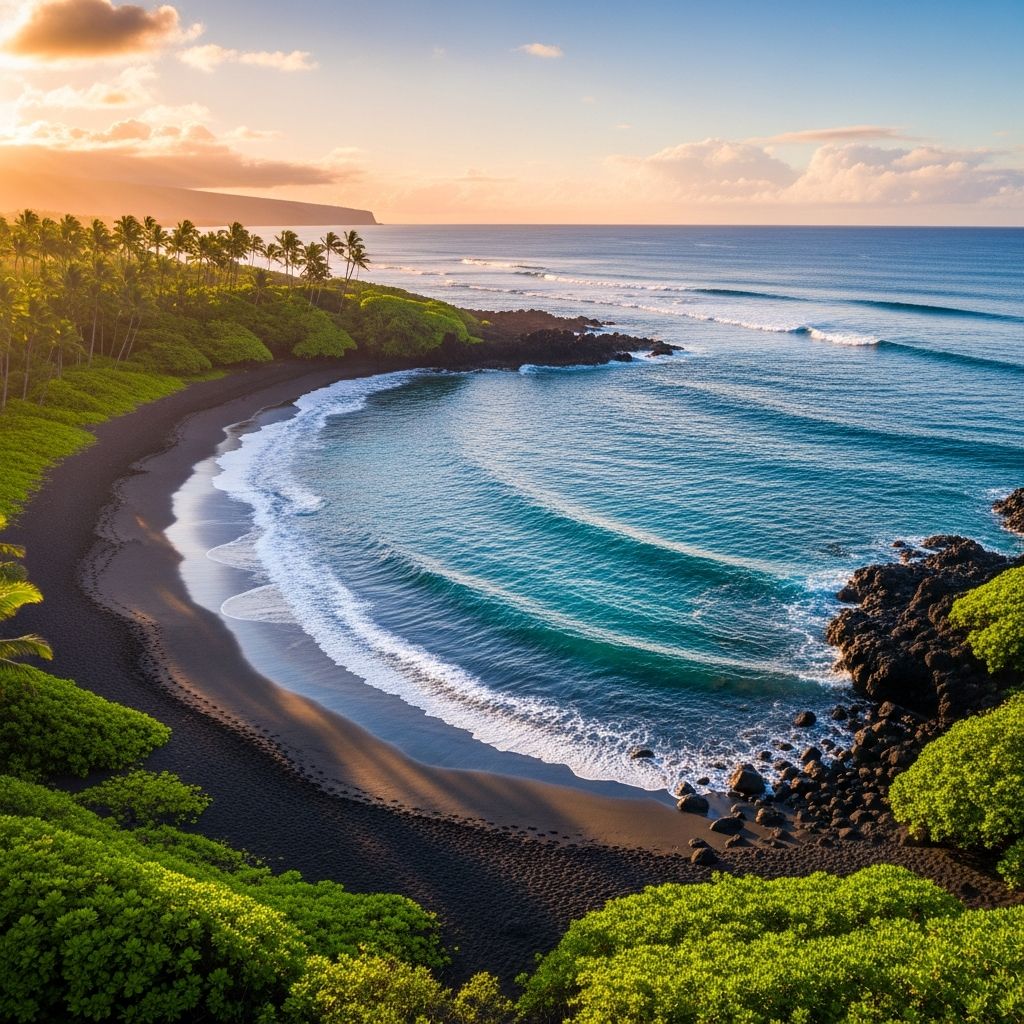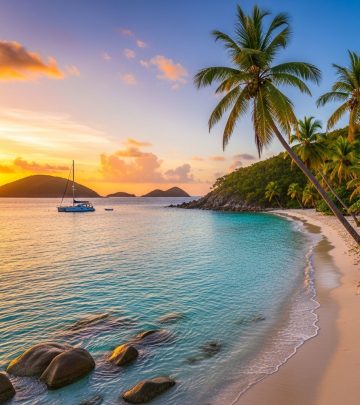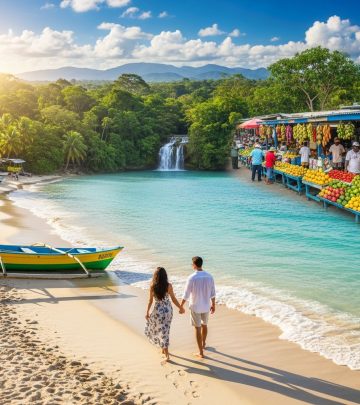Honomalino Beach: Discovering Hawaii’s Untouched Seaside Gem
Adventure seekers and nature lovers will find paradise at Honomalino Beach, a secluded blend of scenic hiking, volcanic sands, and Hawaiian heritage.

Honomalino Beach: A Hidden Treasure on Hawaii’s Big Island
Nestled along the remote southwest coast of Hawaii’s Big Island, Honomalino Beach offers a rare blend of natural beauty, cultural richness, and adventure. With its signature black-and-white sands, turquoise waters, and lush vegetation, Honomalino stands apart from Hawaii’s more crowded beaches, making it a must-visit for travelers seeking serenity, snorkeling, and authentic Hawaiian ambiance.
Why Visit Honomalino Beach?
- Secluded beauty: Fewer crowds due to its remote, hike-in access.
- Unique black-and-white sands: A stunning contrast of volcanic black sand and white coral fragments.
- Excellent snorkeling: Pristine, clear waters teeming with coral and marine life.
- Cultural connection: Deep roots in traditional Hawaiian fishing culture.
- Scenic hike: A journey through lush jungle, lava flows, and coastal vistas.
Location and Setting
Honomalino Beach is located just south of Miloliʻi Beach Park in the Kau district of the Big Island. It lies about 30 miles south of Kailua-Kona and is accessed via a moderate scenic hike from the fishing village of Miloliʻi.
| Feature | Details |
|---|---|
| Region | South Kona, Hawaii |
| Nearest Access | Miloliʻi Beach Park |
| Distance from Kailua-Kona | Approx. 30 miles (48 km) |
| Parking | Limited, at Miloliʻi Beach Park |
| Trail Length | About 1.5 miles roundtrip (30–40 min walk roundtrip) |
Getting There: The Scenic Hike
Part of Honomalino’s charm is the journey it takes to get there. With no direct road access, you embark on a memorable hike starting near the historic yellow Hauʻoli Kamanaʻo Congregational Church in Miloliʻi. The trail weaves through canopied jungle, coastal shrubland, and recent lava flows, offering glimpses of ocean cliffs and private coves along the way.
Hiking Route Overview
- Park at the Miloliʻi Beach Park lot.
- Find the yellow church and look for trailhead signage.
- Begin on a gravel track through dense shrubs and wildflowers like lantana and night-blooming cereus.
- Follow the coastline along the bay, occasionally removing your shoes to wade at high tide.
- Cross through coastal forest and traverse fresh lava, observing fallen trees and cactus patterns.
- Arrive at Honomalino, greeted by palm groves and the famous black sand beach.
What to Bring for the Hike
- Sturdy hiking shoes (lava rocks and forest floor can be uneven or prickly)
- Sun protection: hat, sunscreen, sunglasses
- Plenty of water and snacks (no amenities on-site)
- Wet shoes if you expect high tides
Trail Safety Tips
- Check weather and ocean conditions before you go; avoid the hike during high surf or storms.
- Stay on marked trails to avoid sacred sites and protect local flora.
- Respect all signage regarding private property and cultural sites.
The Beach Experience
Once you arrive, Honomalino Beach reveals a broad, gently curving shoreline merging charcoal-black sand with scattered white coral. Backed by a steep green hillside and framed by coconut palms, the beach offers ample shade and tranquil views.
Beach Features
- Sand: Mix of volcanic black with white coral pebbles; especially striking at sunrise and sunset.
- Wildlife: Sea turtles (honu), colorful reef fish, and sometimes pods of spinner dolphins.
- Natural wonders: At high tide, a dramatic blowhole on the southern end of the beach sends plumes of seawater skyward.
- Views: Sweeping ocean vistas, lava cliffs, and pristine forest backdrop.
When to Visit
- Morning visits offer the calmest surf and best swimming.
- Weekdays generally quieter than weekends and holidays.
- Avoid high surf or storms, which can make swimming dangerous and obscure parts of the trail.
Suitability
- Recommended for: Adventurers, nature lovers, photographers, snorkelers
- Not ideal for: Families with young children (due to hike difficulty and potential strong currents)
Swimming, Snorkeling, and Water Activities
Honomalino’s clear waters, protected by a natural bay shape, provide excellent conditions for snorkeling and swimming—when the surf is calm.
Marine Life
- Coral reefs: Vibrant, especially near rocky outcrops north and south of the main beach.
- Tropical fish: Moorish idols, butterflyfish, parrotfish, triggerfish, and more.
- Sea turtles: Often seen resting on shore or grazing underwater.
- Occasional dolphins: Especially early in the morning.
Best Practices for Water Activities
- Check ocean conditions before entering—strong currents can occur, especially at the bay’s mouth.
- Snorkel near shore, beyond the lava pebbles for best visibility and easiest entry.
- Avoid standing on or touching coral, which is fragile and ecologically vital.
- Swim with a buddy—no lifeguards are present.
| Activity | Notes |
|---|---|
| Swimming | Safe during calm weather; avoid after storms or with high surf. |
| Snorkeling | Excellent visibility, especially near reefs; watch for currents. |
| Kayaking/SUP | Possible on calm days; bring your own gear and check for surf advisories. |
Wildlife and Natural Features
Honomalino Bay’s biodiversity is a highlight of any visit. Beyond marine life, the area supports unique plant communities adapted to both forest and volcanic terrain. Birdsong is common in the mornings, and the interplay of native plants and dramatic lava fields provides a landscape unlike any other beach on the island.
- Flora: Coconut palms, keawe trees, lush undergrowth, night-blooming cereus.
- Fauna: Native birds, crabs, reef fish, sea turtles.
- Geological features: Recent lava flows create rugged coastal forms and tide pools.
Nearby Attractions and Points of Interest
For those seeking to explore further, several notable attractions are accessible by car:
- Pu’uhonua o Hōnaunau National Historical Park: Rich in Hawaiian culture and sacred sites.
- Kealakekua Bay and Captain Cook Monument: Popular for snorkeling, historical tours, and kayaking.
- The traditional fishing village of Miloliʻi: Still active today, offering a window into local customs and history.
- Kona Cloud Forest Sanctuary: Guided tours showcasing cloud forest ecology.
Cultural and Historical Significance
Honomalino Beach is more than a natural wonder—it’s woven into the legacy of Hawaiian tradition. The adjacent Miloliʻi is considered one of the Big Island’s oldest fishing villages, settled by early Polynesians centuries ago. The bay remains a traditional fishing ground, and the spirit of quiet respect for the land and sea is palpable.
Visitors often pass sacred burial grounds during the hike. It is essential to treat these areas—and the beach itself—with reverence. The current local population maintains strong ties to their heritage; respecting private property and local customs is not only good practice but a matter of aloha.
- Avoid weekends or local gatherings unless invited—it’s a time for community.
- Refrain from loud noise or disturbing wildlife, especially near fishing or cultural sites.
- Follow the Hawaiian principle of malama ʻāina (care for the land) by leaving no trace.
Visitor Essentials
- Amenities: None on-site. Nearest restrooms are at Miloliʻi Beach Park.
- Safety: No lifeguards, unpredictable currents—exercise caution.
- Parking: Available at Miloliʻi Beach Park; limited space.
- Supplies: Bring all food, water, and snorkeling gear.
- Weather: Mostly sunny, but hike is exposed—bring sun protection.
Quick Summary Table
| Category | Details |
|---|---|
| Best for | Adventurous travelers, snorkelers, photographers |
| Access | 20–30 minute moderate hike or by boat |
| Facilities | None at beach (basic facilities at trailhead) |
| Hazards | Strong currents, uneven terrain, no lifeguards |
| Status | Open to public; respect local traditions and privacy |
Frequently Asked Questions (FAQs)
Q: How do I get to Honomalino Beach?
A: Park at Miloli‘i Beach Park, then follow signs near the yellow church for a 20–30 minute scenic hike, traversing jungle, lava rocks, and coastal paths.
Q: Is swimming at Honomalino Beach safe?
A: Swimming is best during calm weather. Beware of strong currents and no lifeguards are on duty, so always use caution and avoid the water during high surf.
Q: What should I bring to Honomalino Beach?
A: Bring sturdy shoes for hiking, water, snacks, sun protection, and your own snorkeling gear. There are no facilities or shops at the beach.
Q: Is the beach good for families with young children?
A: Due to the moderately difficult hike and lack of amenities, it’s not recommended for families with toddlers or those with mobility issues.
Q: Can I visit Honomalino Beach on weekends?
A: It is best to avoid weekends as the area is popular for local gatherings. Respect local privacy and community traditions.
Travel Tips for a Responsible Visit
- Always respect the environment—pack out everything you bring in.
- Refrain from taking shells, rocks, or coral as souvenirs.
- Support the local community by patronizing nearby businesses respectfully.
- Observe and honor signs related to private property or cultural sites both on the trail and at the beach.
Whether you seek adventure, solitude, or a window into authentic Hawaiian life, Honomalino Beach stands as one of the Big Island’s best-kept secrets—untouched, unforgettable, and unmistakably Hawaii.












